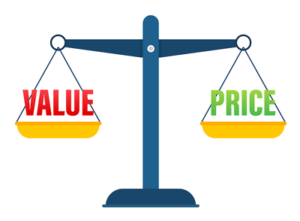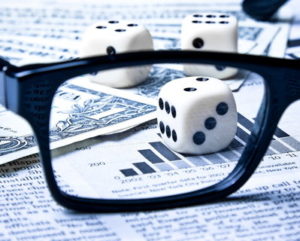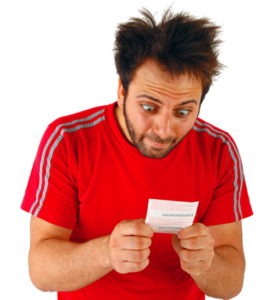 Anyone that knows anything about betting and gambling will know that the House always wins. It is one of those phrases that has been trotted out time and time again, in a similar vein to the idea of never seeing a poor bookmaker.
Anyone that knows anything about betting and gambling will know that the House always wins. It is one of those phrases that has been trotted out time and time again, in a similar vein to the idea of never seeing a poor bookmaker.
This is largely thanks to the fact that the odds that you take are almost always stacked against you, hence the phrase ‘stacked odds’. The notion is a simple one: there are certain bets that are designed to be poor value for you, which makes them excellent value for the bookmakers and companies that offer them.
The most obviously example of this is the National Lottery and the EuroMillions. The odds of winning the Lotto are 1 in 45,057,474, but that doesn’t stop millions of us from playing it twice a week. It’s more unlikely that you’ll win the EuroMillions, given that the chance of doing so stands at 1 in 139,838,160.
Regardless, people all over the continent play it on a weekly basis, in spite of the fact that the stacked odds mean that they’re almost certainly never going to win it. Lotteries are the most obvious example, but there are plenty of others that we fall for all the time.
Stacked Odds Explained
 Casinos and bookmakers are businesses. It might seem simple to say as much, but that is something that we often forget. We, as punters, feels as though they should operate in a ‘fair’ manner, but they are designed and set up to take as much money from us as they possibly can.
Casinos and bookmakers are businesses. It might seem simple to say as much, but that is something that we often forget. We, as punters, feels as though they should operate in a ‘fair’ manner, but they are designed and set up to take as much money from us as they possibly can.
As a result, they work in a way that sees the odds stacked in their favour, which means that they are stacked against us. This can happen in small ways and big ways, but it happens all of the time regardless of what you do and which games you play.
There are no games in a casino that are fair, nor are there bets at a bookmaker that reflect the true odds of an event happening. Stacked odds mean that the companies concerned will always make a profit in the long-term.
Think of betting on red on an American roulette table. The payout is Evens, but the odds aren’t, thanks to the presence of the 0 and the 00. That shifts the odds so that the chances of it landing on red are 47.4%, meaning that 52.6% of it the House is walking away with your money. Even if you win, someone else almost certainly loses.
Things To Look Out For
 If you’re particularly keen to avoid odds that are stacked too much in the favour of the House or of the bookmaker, there are certain things that you can look to avoid. One of the best examples of this comes in the form of side bets that you can place whilst you’re at the card tables in casinos.
If you’re particularly keen to avoid odds that are stacked too much in the favour of the House or of the bookmaker, there are certain things that you can look to avoid. One of the best examples of this comes in the form of side bets that you can place whilst you’re at the card tables in casinos.
In order to explain what we mean, we’ll have a look at some of the side bets that are available at a blackjack table in a casino. In blackjack, the only way to keep the House’s Edge as low as possible is to play Basic Strategy and never deviate.
If you decide to ‘go with your gut’ or to play the side bets, you’re automatically deviating from what Basic Strategy tells you to do, which means that you’re increasing the House’s Edge and reducing your chance of winning. Yes, the payout on such wagers are usually good, but that’s because the stacked odds mean that it is worth the casino offering such odds in the hope of tempting you to play something that the House knows is weighted very heavily in their favour.
Here are some of the bets we’re talking about:
- Insurance – This is a side bet that covers you against the dealer getting blackjack and is usually offered if they get dealt an Ace with their face-up card
- Perfect Pairs – If you’re dealt a pair, you will get paid out at an increased rate. If you get a mixed pair, that’ll pay 5/1, whilst a pair of the same colour pays 12/1 and a perfect pair pays 25/1
- 21+3 – a bet that involves your two cards and the upturned card of the dealer. If all of your cards are suited, that flush will payout at 5/1. If you get a straight then that’s 10/1, whilst three of a kind pays out at 30/1. The best result is three of the same card, which pays out 100/1
The House Edge involved in 21+3 varies depending on the numbers of decks being used, usually being 6.29% with seven decks and going up to 8.78% for four decks. A good player choosing to stick to Basic Strategy can face a House Edge of about 0.5%, which can rise to 2% of you play badly.
Depending on which side bet you opt for, that House Edge can raise as high as 10% or more, showing that stacked odds really aren’t on your side.
At The Bookies
 To give you a sense of the sort of thing that you want to keep your eye out for at the bookmakers, the likes of bet requests are a good example.
To give you a sense of the sort of thing that you want to keep your eye out for at the bookmakers, the likes of bet requests are a good example.
The whole point of requesting a bet is that it is asking the bookie to give you odds on something that they don’t normally do. This is because the punter feels that they have some sort of sense of what might happen in a match, so they put that intuition to the test. The bookmaker, meanwhile, knows that the bettor won’t be able to get such a random market elsewhere, so there is no need for them to price competitively.
Other stacked odds include the sorts of things that you’ll see in a bookie’s window. ‘Everton to beat West Brom 3-1 @ 12/1!’, the sign screams. Ignoring the fact that Everton often struggle to win at the best of times, the likelihood of them winning exactly 3-1 is slim.
Indeed, if you look at the 2018-2019, 2019-2020, 2020-2021 and 2021-2022 seasons combined, the Blue team on Merseyside has won by that scoreline just five times out of 152 matches, or in 3.28% of their matches. The stacked odds might look good, but the likelihood of you winning such a bet is slim.
